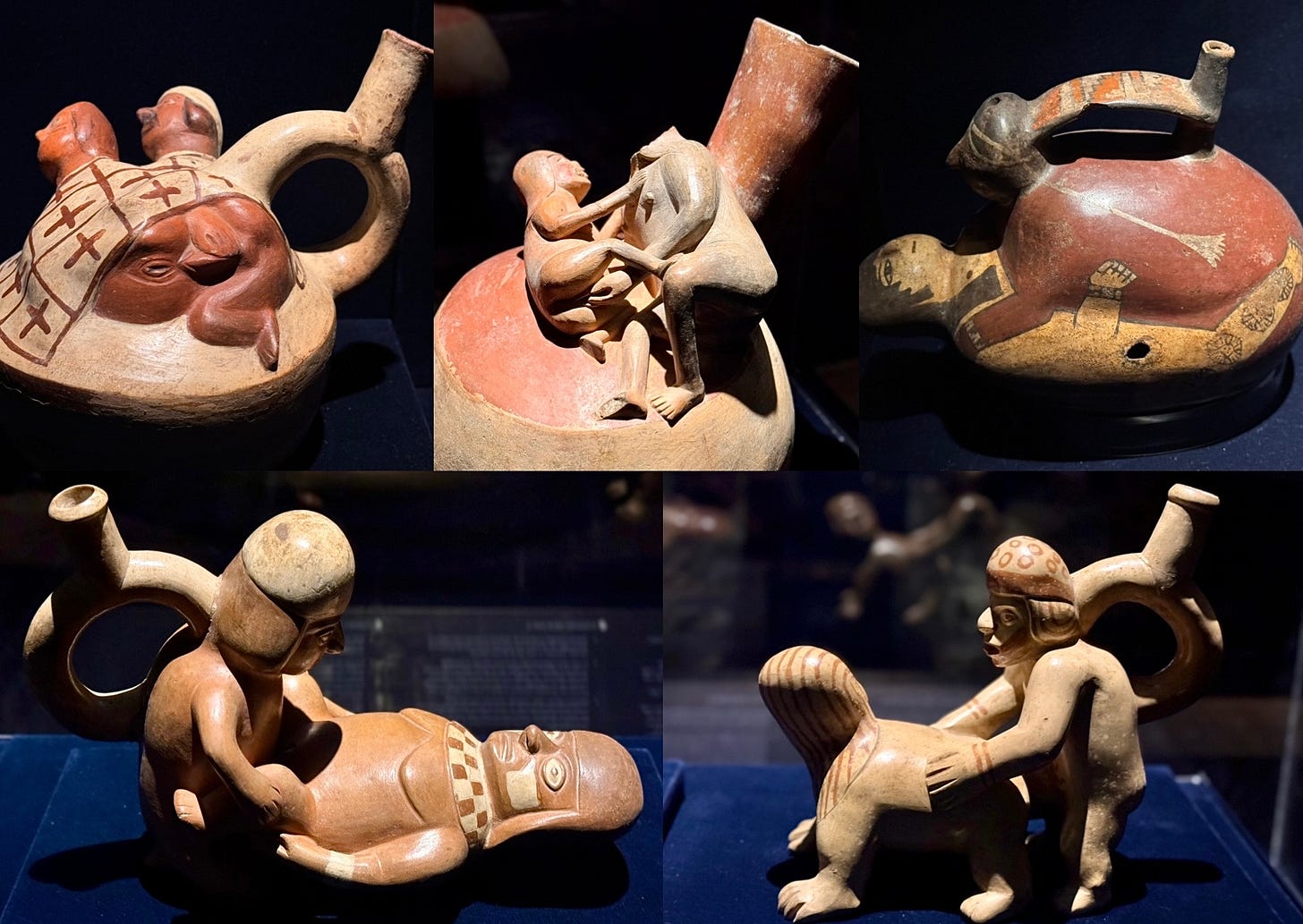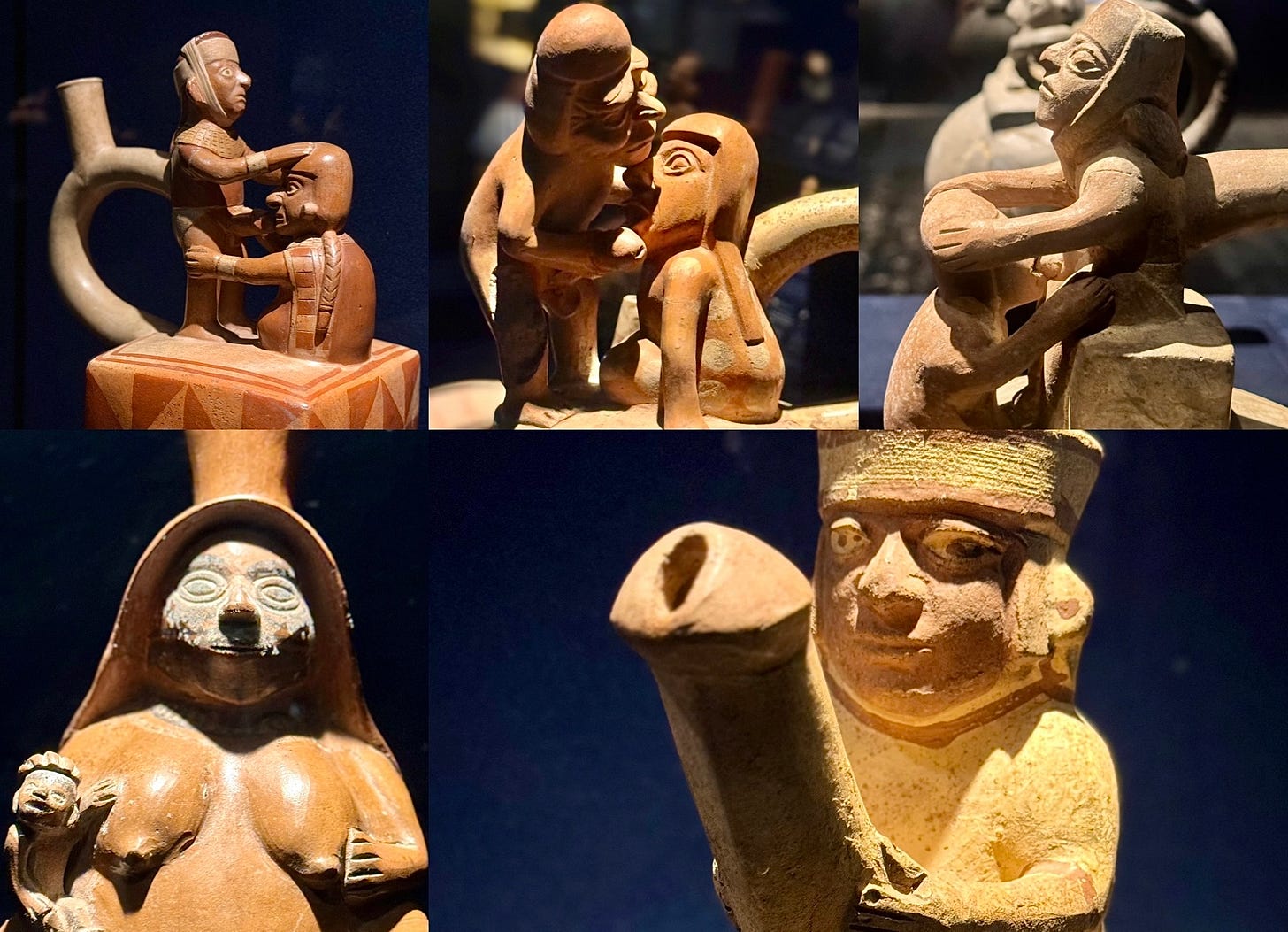Beyond Taboos: The Open-Mindedness Revealed in the World's Largest Collection of Ancient Erotic Art
Stepping into the Larco Museum in Lima, Peru made progressivism feel like a reach into the distant past rather than into the future
📍 Lima, Peru
The Larco Museum, renowned for its vast collection of pre-Columbian artifacts, offers a unique glimpse into how ancient Andean cultures viewed the human body, pleasure, and the interconnectedness of life and nature. Among the most fascinating and provocative exhibits is the Erotic Gallery, home to the largest collection of ancient erotic art in the world.
As I wandered through the gallery, I almost blushed at the unapologetically explicit pottery from 1,250 BC to 1,300 AD—an era when human sexuality was not shrouded in the taboos and conservatism that often exist in modern society. These ceramic artifacts, primarily from the Moche, Vicus, and Lambayeque pre-Columbian cultures, depict a variety of sexual acts, including oral and anal non-reproductive sex and even masturbation.

One of the most striking aspects of these artifacts is their celebration of the female form. Bowls with exaggerated vulvas symbolize women's divine power to give life, manifesting Pachamama, or Mother Earth, herself. When liquids are poured into these bowls, they flow through openings in the form of female genitalia, transforming the mundane act of drinking from a vessel into a ritualistic one that honors the life-giving properties of the female body.
At the heart of the ancient Andean worldview is the concept of tinkuy, which signifies the generative union of opposite and complementary forces. This idea permeates the erotic art of ancient Peru, particularly in scenes depicting the mythological union of the civilizing Moche hero with Pachamama. From their union, the tree of life is born, spawning continuous renewal and existence. This metaphor extends to the cyclical nature of life and the essential role of sexual union in sustaining it.
The eroticism in these artworks is not just about physical pleasure; it represents the harmonious balance necessary for life to thrive. This perspective starkly contrasts with many modern views that often separate sexuality from other aspects of life or regard it with shame. The artifacts in the Larco Museum challenge the modern viewer to reconsider their notions of sexuality—a natural and integral part of life that ancient cultures embraced without prejudice.
In modern society, discussions about sex often come with layers of cultural and religious baggage, rather than celebrating it as a regenerating force for the world (reproductive sex) and intimate connection (recreational sex). Most of the erotic artifacts on display, like sex itself, served functional purposes. Pottery bottles with spouts shaped like erect penises, for example, were likely used in fertility rituals. When drinking from these vessels, liquid would spill in a manner mimicking the emission of fluids, symbolizing the fertilization of both humans and of the earth of which they are inextricably part. Scenes of anal penetration are frequently associated with the underworld (Uku Pacha) and may symbolize the activation of ancestral spirits to fertilize the earth.

The Larco Museum's Erotic Gallery provides a rare opportunity to engage with ancient perceptions of sexuality free from the constraints of modern prejudices. It invited me to appreciate a worldview where the erotic impulse is seen as essential to life's continuity and vibrancy. By examining these artifacts, I gained a deeper understanding of how ancient Peruvians experienced the world—with sexuality seamlessly integrated with nature, spirituality, and communal life.
As I left the Larco Museum, I couldn't help but reflect on how much we could learn from these ancient cultures. The explicit nature of the art challenges us to confront our own discomfort and biases, offering a chance to see sexuality as the ancient Peruvians did: a human and divine force of existence. Their art reminds us that our bodies and their pleasures are not just private concerns but integral to our connection with the earth and each other. In a world that often feels divided and disconnected, the ancient eroticism of the Larco Museum offers a vision of unity and renewal, rooted in the timeless lust and life.



